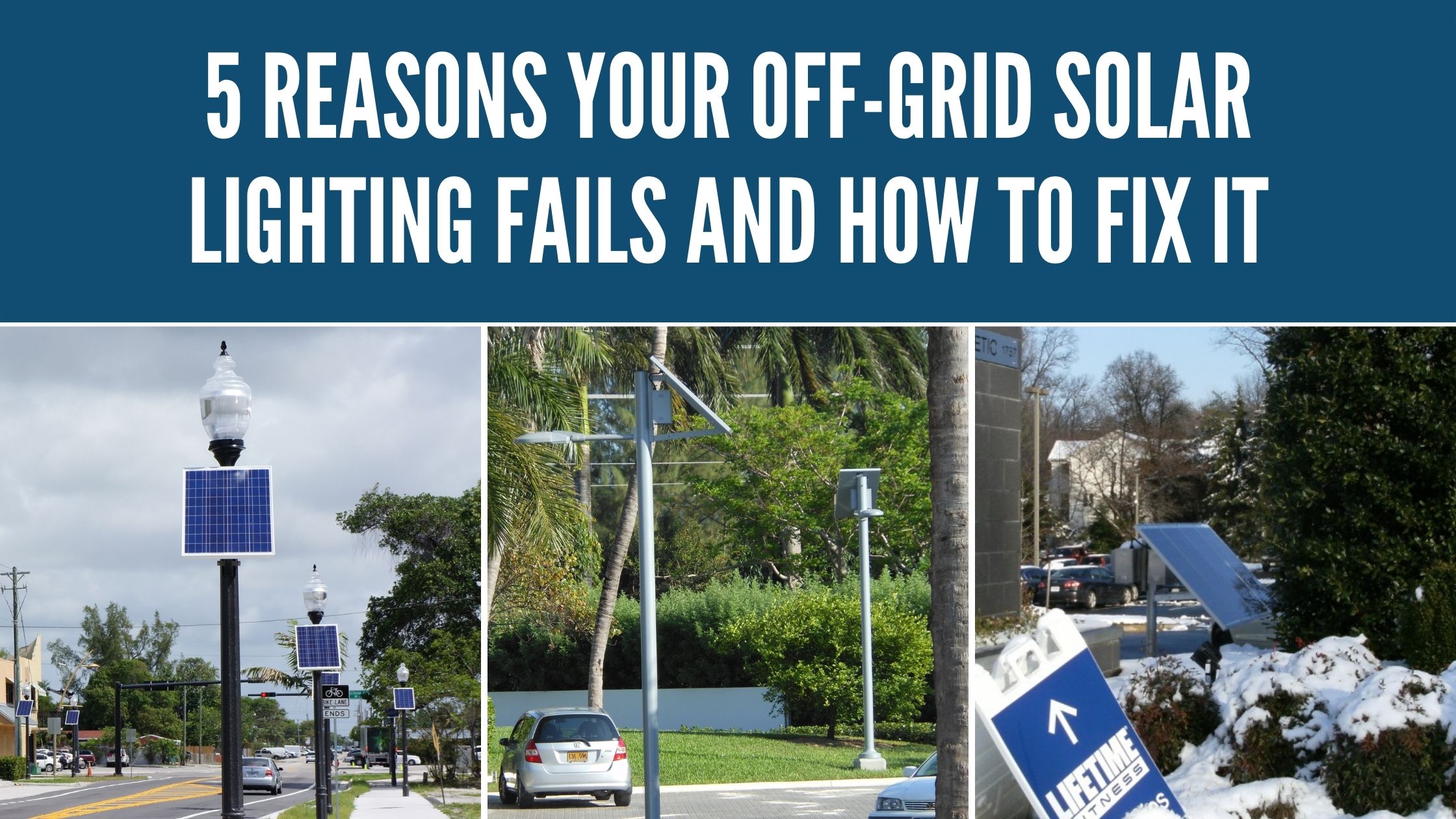


Whether you purchase large off-grid commercial solar light systems or smaller off-grid home solar light systems, there are generally only a handful of reasons these lights will fail. Most of these failures are easy to fix. Hopefully, after reading this list, you will be able to safeguard your off-grid solar lights against failure, thus ensuring many years of trouble-free operation.
Shading is very bad for your solar panels. Solar panels use sunlight to gather energy and store it in the battery pack to power the light fixture at night. If the solar panel is shaded even a little, this can greatly impact the system's capability of gathering energy. Some solar panels, depending on how they are wired, can completely stop functioning even with a small section in the shade.
Seems simple, but you would be amazed at how many off-grid solar lights we have seen installed under a bush, tree, or some other obstruction that shades the solar panel. Reduce shading by trimming trees or surrounding brush, or moving the solar panel to a more open location. This will ensure your panel can gather the maximum amount of energy provided by the sun.
During the day, the sunlight on the panel tells the system controller that it is daytime. At night, when the panel is no longer producing a charge, the controller understands that it is now dusk and to turn the light on.
If the light fixture is installed above the solar panel, the fixture's light can cause the system to malfunction. Instead of thinking it is nighttime, the controller may think it is daytime when the light turns on. Instead, keeping the solar panel above the light fixture, or using an additional photocell or controller setup, would make the system function, regardless of the light cast on the solar panel.
Since the sun moves from east to west in North America, the optimum amount of sun is collected when the panels are facing South. If the solar panel is not facing South, its sunlight harvesting and power production capability will be severely inhibited—thus negatively impacting the off-grid solar light system performance.
If the solar, for any reason, cannot be pointed directly south at a specific angle (for SEPCO, our bracket is 45°), like if installed on a roof structure, then sizing the system for a different orientation and angle should be determined at the beginning of the project specification. There are many tools available to allow for an adjustment to the system sizing, such as understanding the angle of the panel by looking at the slope of a roof, to change the solar sizing. A flat-mount solar panel is almost never a good option unless you are in a very sunny location.
A high-quality off-grid solar light system is designed using a thorough combination of calculations revolving around the light fixture or device's power consumption, also known as the load, plus the solar insolation (based on the geographic location of the project) and autonomous battery storage to name a few. If any of these calculations are not performed correctly, the net result will be a poorly designed system that is suspect to failure.
Most off-the-shelf systems do not go through this type of system setup; however, there are things you can do, like the options mentioned above, such as facing the panel correctly at an angle, or making sure the solar panel is in full sun. If your system was properly designed, talk to your lighting professional and work to see why there could be an issue.
The only scheduled maintenance required for a high-quality off-grid solar lighting system is a) light fixture lamp change and b) battery change. The typical life expectancy of a CFL lamp is 20,000+ hours, while high-performance LED lamps are rated to last well beyond 100,000+ hours.
The battery life expectancy within a properly designed off-grid solar lighting system is 5-7 years. If the system is not operating correctly—and the solar panels are facing South and are not shaded, and the system calculations/design are appropriately done, chances are high that it's either time to replace the lamp or the batteries.
General maintenance should be performed on all solar lighting systems, including inspection of the panel, checking all connections, and making sure everything is in working order. This only needs to be done about once a year with a battery change per the manufacturer's specifications. If your system is still having problems, contact the manufacturer and see if they can help resolve the system.
Making sure your solar lights are installed properly will ensure many, many years of reliable operation for any application.
